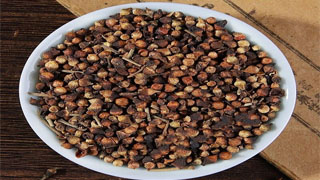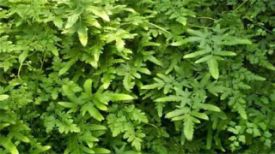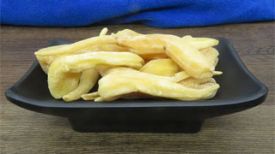
1. Aliases
Water Wengzi, Water Yonghua, Water Banyan Flower, and Big Snake Medicine.
2. Plant morphology
Evergreen large trees; Branchlets are nearly cylindrical or quadriangular in shape. Leaves opposite, nearly leathery, broadly ovate, oblong, elongated or broadly lanceolate, with a blunt and acute or gradually pointed tip and a blunt head, base blunt or gradually narrowed, entire; The lateral veins are slender and only more prominent below. Cymose panicles lateral and terminal, with small, bluish white flowers, nearly sessile; Calyx tube bell shaped, apex nearly flattened, calyx lobes fused into a cap shaped shape, apex pointed, with glandular dots. When the flower blooms, it falls off as a whole, with 4 petals that fall off early and many stamens; Inferior ovary. The berries are nearly spherical, purple black with spots at maturity.
3. Origin distribution
Born on both sides of rivers and by valleys and streams, distributed in Guangdong, Hainan, Guangxi, Fujian and other places, wild or cultivated.
4. Harvesting and processing
Harvest around Loong Boat Festival. Pick the inflorescence of the water weng flower with tender buds, sun it for three to a thousand hours, stack it tightly, and sweat for 1-2 days. Then, sun and sun it until the feet are dry at night, sieve out the branches and impurities.
5. Characteristics of medicinal herbs
The flower buds of Shuiwenghua medicinal herb are oval or spherical in shape, with slightly pointed and wrinkled ends. The lower part has residual calyx tubes, which are inverted bell shaped or circular in color, brown, and the upper part is cap shaped, composed of 5 fused petals, light brown yellow; Remove the cap shaped corolla and see overlapping stamens; The filaments are brownish black with a cone-shaped style in the center. Hard texture. The air is slightly fragrant and the taste is bitter.
6. Nature, taste, and meridian tropism
Cold in nature and bitter in taste. Gui Lung Meridian, Spleen Meridian, and Stomach Meridian.
7. Effect and function
Clear heat and relieve heat, produce saliva and quench thirst, remove dampness and eliminate stagnation. Clear heat and laxative gunpowder belonging to the subcategory of heat clearing medicine.
8. Clinical applications
Dosage 15-30 grams, decoct and take; Or soak water instead of tea; Or cook Congee. Used to treat fever, dry throat, thirst, bloating, vomiting, and diarrhea caused by summer heat and food stagnation.
9. Pharmacological research
Shuiwenghua has a strong inhibitory effect on common pyogenic cocci and intestinal pathogenic bacteria, as well as a cardiotonic effect.
10. Chemical composition
Shuiwenghua contains flavonoid glycosides, including 5,7-dihydroxy-6,8-dimethoxyflavanone, etc; Gallic acid, ethyl gallate, ursolic acid, and various amino acids, sugars, and β - sitosterol. Flower buds contain 0.18% volatile oil, mainly composed of α - pinene, β - pinene, laureene Z, β - basilene Z, 3-basilene E, 2,7-dimethyl-1,6-octadiene, linalool, 3,4-dimethyl-2,4,6-octylene, fennel, methyl salicylate, geranyl acetate, terpineol acetate, geraniol, hesperidene, 8-guaiacene, 8-junipene, nerol, etc.
11. Taboos for use
It is not yet clear.
12. Compatibility prescription
1. Treatment for colds, fever, bacterial dysentery, acute gastroenteritis, and indigestion: 15-30 grams of water hyacinth. Boiled in water. (Guangzhou Air Force's Handbook of Common Chinese Herbal Medicine)
2. Treatment for fever caused by Bansha: 15 grams of dried water Wenghua flowers and 15 grams of dog liver vegetables. Jianfu. (Chinese Herbal Medicine in Huizhou Region)
3. Treatment for food stagnation and diarrhea: 15 grams of dried water wenghua flowers or 15 grams of cloth residue leaves. Boiled in water. (Chinese Herbal Medicine in Huiyang Region)
The content of the article is for clinical reference only. Non professionals in traditional Chinese medicine are not allowed to try medication.


